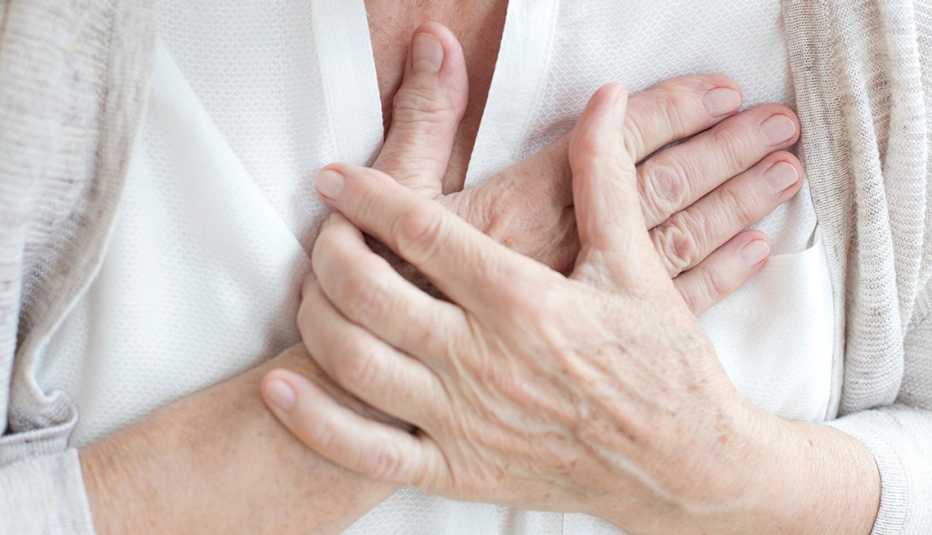There are two types of stroke. The more common, ischemic, accounts for 87 percent of all strokes. It occurs when a clot obstructs a blood vessel, cutting off blood to the brain. The second type of stroke, called hemorrhagic, occurs when a weakened blood vessel ruptures, causing bleeding in the brain.
The hypertension connection
Despite the prevalence of heart attacks and stroke, the human body often reveals lots of clues that these health issues might be on their way. Hypertension is a good example: Consistently high blood pressure readings suggest your artery walls have become less elastic, which, over time, decreases the flow of blood and oxygen to the heart. The pressure can also cause damage in the artery lining. When the body responds to the injury, a clot can form, blocking the vessel. “When this happens, the red blood cells can’t fit – and get closed off,” explains Andrew Budson, M.D., professor of neurology at Boston University School of Medicine and chief of cognitive and behavioral neurology at VA Boston Healthcare System. When the block prevents blood flow to the brain, “that’s a stroke.”
Ways to Lower Blood Pressure to Decrease the Risk of Stroke
Close to half of U.S. adults have high blood pressure. Some people with high blood pressure will need medications to bring down their pressure. But many people can lower their numbers into a healthy range by making lifestyle changes. These same changes can help lower cholesterol levels as well.
- Get at least 150 minutes of physical activity each week (about 30 minutes a day, 5 days a week)
- Not smoking
- Eat a healthy diet, including limiting sodium (salt) and alcohol
- Keep a healthy weight
- Manage stress
No wonder then that hypertension “is the most important risk factor for stroke,” says Mitchell Elkind, M.D., professor of neurology and epidemiology at Columbia University and chief clinical science officer for the American Heart Association. He estimates that hypertension contributes to about half of all strokes and the vast majority — about 80 percent — of hemorrhagic strokes.
“When you have years and years of elevated blood pressure pounding on the walls of the blood vessels, it damages the walls,” says Budson.
About 116 million U.S. adults – nearly one in two – have high blood pressure (defined as 130/80 mmHG) or higher. Only about one in four are taking medication or have made lifestyle changes to lower their numbers, according to the CDC. Many people don’t even know they have high blood pressure because there are no symptoms. That’s one reason it’s called the “silent killer.”
“Addressing and treating hypertension is vitally important to reducing the risk of stroke,” says Beth Abramson, M.D., the Paul Albrechtsen Professor in cardiac prevention and women’s cardiovascular health in the division of cardiology at St. Michael’s Hospital in Toronto. Aging happens, but hypertension we can do something about; it’s a controllable risk factor. “Addressing hypertension, or high blood pressure, will have a tremendous impact on reducing the risk of stroke.”
Blood Pressure by the Numbers
A normal blood pressure is 120/80 — that goes for adults of all ages. The number on top, the systolic, measures the pressure in your arteries when your heart beats; the second, or diastolic, measures the pressure in your arteries when the heart rests between beats. Blood pressure is measured in millimeters of mercury (mm Hg). Since 2017, the American College of Cardiology and 10 other organizations have encouraged treatment for anyone whose pressure reaches 130/80 or higher.
| Blood pressure category |
Systolic blood pressure (mm Hg) |
Diastolic blood pressure (mm Hg) |
| Normal |
less than 120 |
less than 80 |
| Elevated (prehypertension) |
120-129 |
less than 80 |
| Stage 1 hypertension |
130-139 |
80-89 |
| Stage 2 hypertension |
140 or higher |
90 or higher |
| Hypertension crisis |
higher than 180 |
higher than 120 |
How high cholesterol boosts stroke risk
High cholesterol — which also can result in plaque buildup (deposits of fat, cholesterol and other substances) — is another danger. Hypertension injures the blood vessel lining, which allows plaque to accumulate in the blood vessels, known as atherosclerosis. As a result, the blood vessels become narrow, making it easier for a clot to get stuck. Sometimes, pieces of plaque can break off, lodging in a narrow blood vessel. If that vessel is in the brain, a stroke can happen; if it blocks flow to the heart, a heart attack can happens.
About one-fourth of U.S. adults, or more than 86 million, have total cholesterol of 200 mg/dL or higher in 2017-2020 according to a 2023 report by the American Heart Association. Optimal levels are about 150 milligrams per deciliter (mg/dL) for total cholesterol; about 100 mg/dL for LDL (“bad” cholesterol); and greater than or equal to 40 mg/dL in men and 50 mg/dL in women for HDL (“good” cholesterol). Triglyceride levels should be less than 150 mg/dL. When hypertension develops, the LDL becomes the main target. It needs to be brought down below 70 mg/dL, with cholesterol-lowering medications or changes in diet.






































































More From AARP
3 Stress-Reduction Techniques
Try these relaxation methods to ease stress and nourish the body at AARP® Staying Sharp®
What to Do (and Not Do) When Someone Is Having a Stroke
Knowing how to respond can go a long way to preventing permanent disability
7 Tips to Reduce Your Stroke Risk
Everyday habits backed by the American Heart Association can have a big impact
Recommended for You